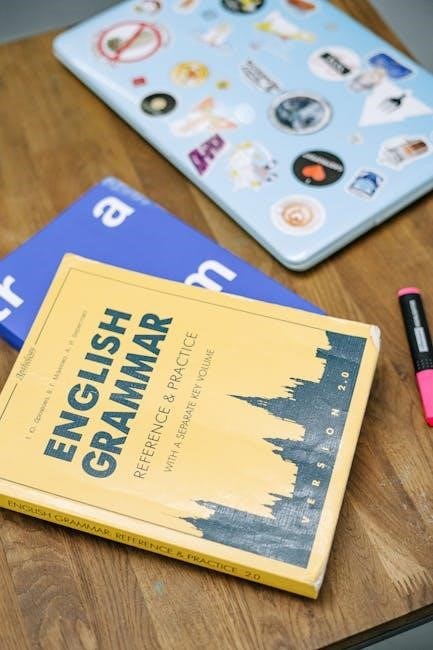Foundations of Reading Practice Test PDF: A Comprehensive Guide
Welcome! This comprehensive guide introduces the Foundations of Reading Practice Test PDF, an invaluable tool for educators preparing for their certification exams. It’s designed to familiarize candidates with the test’s structure and content. These tests are full-length samples, and include answer keys, sample responses, and evaluation data.
The Foundations of Reading Test, often referred to as FoRT, serves as a critical assessment tool. It gauges a teacher’s proficiency and depth of understanding when it comes to students’ reading development. This test is a gateway for educators seeking licensure, particularly those aspiring to teach in pre-K through 9th grade, including intervention specialists.
Passing this exam is a significant milestone toward earning your teaching certificate. The test evaluates core concepts, ensuring educators possess the knowledge and skills necessary to foster strong reading foundations in their students. The practice test is designed as a resource to help you prepare.
It assesses key areas such as phonological and phonemic awareness, phonics, fluency, vocabulary, and reading comprehension. A strong performance on the FoRT demonstrates an educator’s readiness to effectively teach reading skills, contributing to students’ academic success. Preparing with practice tests can dramatically improve your confidence and competence.
The Foundations of Reading practice test is an essential step to guarantee your readiness.
Purpose of the Practice Test
The primary purpose of the Foundations of Reading practice test is multifaceted, all centered around enhancing your preparation and increasing your likelihood of success on the actual exam. First and foremost, it aims to familiarize you with the test’s structure and content. By experiencing the format, question types, and content areas beforehand, you can alleviate anxiety and approach the real test with greater confidence.
The practice test serves as a diagnostic tool, helping you identify areas where your knowledge is strong and areas where you need further study. This targeted approach maximizes your study efforts, allowing you to focus on the concepts and skills that require the most attention.
Furthermore, the practice test provides an opportunity to hone your test-taking strategies. You can practice pacing yourself, managing your time effectively, and employing techniques for answering different types of questions. By simulating the actual test environment, the practice test helps you build stamina and reduce test-day fatigue. Ultimately, the practice test is designed to empower you with the knowledge, skills, and confidence needed to excel on the Foundations of Reading test.
Structure and Content of the Practice Test

The Foundations of Reading practice test mirrors the actual exam in its structure and content, providing a realistic simulation of the testing experience. Typically, it comprises two main sections: multiple-choice questions and open-response item assignments. The multiple-choice section usually includes around 100 questions, covering a wide range of topics related to reading foundations, such as phonological and phonemic awareness, phonics, fluency, vocabulary, and reading comprehension.
The open-response section typically consists of two written assignments that require you to demonstrate your understanding of key concepts and your ability to apply them in practical scenarios. These assignments often involve analyzing student work, designing instructional activities, or explaining theoretical principles.
The practice test’s content is carefully aligned with the official test blueprint, ensuring that you are exposed to the same concepts and skills that will be assessed on the actual exam. The distribution of questions across different content areas is also representative of the actual test, allowing you to gauge your strengths and weaknesses in specific areas. By familiarizing yourself with the structure and content of the practice test, you can approach the actual exam with greater confidence and preparedness.
Multiple-Choice Question Format
The multiple-choice questions on the Foundations of Reading practice test are designed to assess your knowledge and understanding of key concepts related to reading instruction. Each question presents a scenario, a statement, or a question, followed by four possible answer choices, labeled A, B, C, and D. Your task is to select the best answer choice that accurately addresses the question or completes the statement.
These questions cover a broad spectrum of topics, including phonological awareness, phonics, fluency, vocabulary, and comprehension. Some questions may require you to define terms, identify examples, or apply theoretical principles. Others may present you with classroom scenarios and ask you to choose the most effective instructional strategy or intervention.
To succeed on the multiple-choice section, it’s crucial to have a solid understanding of the foundational concepts of reading instruction. You should also be able to analyze the questions carefully, eliminate incorrect answer choices, and select the best answer based on your knowledge and reasoning skills. Practicing with multiple-choice questions can help you become more familiar with the question format, improve your test-taking strategies, and increase your confidence on test day.
Open-Response Item Assignments
The Foundations of Reading test includes open-response item assignments that require you to demonstrate your ability to apply your knowledge of reading instruction principles in a written format. These assignments present you with realistic scenarios or case studies related to reading instruction, and you are asked to provide a detailed and well-reasoned response.
Typically, the open-response items require you to analyze a student’s reading performance, identify areas of strength and weakness, and recommend appropriate instructional strategies or interventions. You may also be asked to explain the rationale behind your recommendations, citing relevant research or theory to support your claims.
To excel on the open-response items, it’s essential to have a deep understanding of reading instruction principles and be able to communicate your ideas clearly and effectively in writing. Before writing, take time to understand the prompt. Then, organize your thoughts, and craft a well-structured response that addresses all aspects of the question. Be sure to provide specific examples from the scenario or case study to support your analysis and recommendations.

Time Limit and Exam Duration
Understanding the time constraints of the Foundations of Reading test is crucial for effective preparation and test-taking strategy. You will typically be allotted a specific amount of time to complete the entire exam, including both the multiple-choice section and the open-response item assignments.
The total exam duration, including the multiple-choice questions and the written assignments, is usually around 4 hours and 15 minutes. Therefore, it is important to manage your time wisely and allocate sufficient time for each section of the test. Before the examination, familiarize yourself with the time limit and the suggested time allocation for each section.
During the exam, keep a close watch on the clock and pace yourself accordingly. If you find yourself struggling with a particular question, move on and come back to it later if time permits. Practice answering questions under timed conditions to improve your speed and accuracy. Effective time management is key to maximizing your performance on the Foundations of Reading test.
Utilizing the Practice Test for Effective Preparation

To effectively prepare for the Foundations of Reading test, the practice test PDF is an invaluable resource. Treat it as a simulation of the actual exam, adhering to the specified time limits and instructions. Begin by taking the practice test under realistic conditions to gauge your current understanding of the material.
After completing the practice test, carefully review your answers and identify areas where you struggled. Pay close attention to the rationales provided for each question to understand the underlying concepts and principles. Use your performance on the practice test to pinpoint your strengths and weaknesses.
Focus your study efforts on the areas where you need the most improvement. Utilize additional resources, such as study guides, videos, and interactive materials, to reinforce your knowledge and skills. Regularly retake the practice test to track your progress and ensure that you are adequately prepared for the actual exam.
Identifying Areas for Focused Study
After completing a Foundations of Reading practice test, a crucial step is identifying areas that require focused study. Analyzing your performance provides valuable insights into your strengths and weaknesses. Begin by reviewing your answers, noting questions answered incorrectly or those you felt unsure about. Categorize these questions by content area, such as phonological awareness, phonics, fluency, vocabulary, or comprehension.
Look for patterns in your errors. Are you consistently struggling with a particular skill or concept? This indicates an area where you need to concentrate your study efforts. Consult the practice test’s answer key and rationales to understand why you missed certain questions. Pay attention to the specific language and terminology used in the explanations.
Once you’ve identified your weak areas, create a study plan that prioritizes these topics. Allocate sufficient time and resources to address your knowledge gaps. Utilize study guides, videos, and other materials to reinforce your understanding. Regularly assess your progress through practice questions and quizzes.

Practice Test Score Calculation
Understanding how to calculate your score on a Foundations of Reading practice test is essential for gauging your progress and predicting your performance on the actual exam. Typically, practice tests include a scoring worksheet or guide to assist you in this process. This worksheet outlines the points allocated for each question type.
For multiple-choice questions, each correct answer usually earns one point. Tally the number of correct responses in each section and sum them to obtain your raw score. Open-response items, often essays or constructed responses, are evaluated based on a rubric that assesses various criteria, such as content accuracy, clarity, and organization.
The scoring rubric will specify the point range for each criterion. Carefully review your responses and assign points based on the rubric’s guidelines. Add the points for each criterion to determine your score for each open-response item. Finally, sum the points from the multiple-choice section and the open-response items to calculate your total score.
Compare your total score to the passing score for the actual Foundations of Reading exam to assess your readiness. Remember that practice test scores are just one indicator.
Additional Resources for Preparation
Beyond practice tests, a wealth of resources can significantly enhance your preparation for the Foundations of Reading exam. Consider exploring comprehensive study guides that cover all tested domains, providing detailed explanations and examples. These guides often include targeted practice questions and strategies for tackling different question types.
Online platforms offer interactive preparation materials, such as videos, tutorials, and flashcards, to reinforce key concepts. Look for resources that align with the specific standards and competencies assessed by your state’s Foundations of Reading exam. Many websites provide sample test questions and answer rationales, offering valuable insights into the exam’s format and content.
Teacher preparation programs and educational organizations often conduct workshops and seminars focused on reading instruction and assessment. Participating in these events can provide opportunities to deepen your understanding of foundational reading skills and network with other educators.
Remember that consistent practice, coupled with a strategic approach to studying, is key to success. Utilize a variety of resources to address your individual learning needs and strengthen your knowledge base. Effective preparation will increase your confidence and maximize your chances of passing the Foundations of Reading exam.
Where to Find Foundations of Reading Practice Test PDFs
Locating reliable Foundations of Reading practice test PDFs is crucial for effective exam preparation. Start by checking the official website of the testing organization responsible for administering the exam in your state. These websites often provide free or purchasable practice tests that closely mirror the actual exam format and content.
Many teacher preparation programs and university education departments offer practice test PDFs to their students. Reach out to your instructors or academic advisors to inquire about available resources. Online educational platforms and test preparation companies also provide a variety of practice tests, some of which may be available for free download.
Be cautious when using unofficial or unverified sources, as the quality and accuracy of these materials may vary. Look for practice tests that include answer keys and rationales for correct answers, as these can provide valuable feedback on your performance.
Additionally, consider exploring online forums and communities where educators share resources and study tips. You may be able to find recommendations for reputable practice test PDFs or access shared materials. Remember to prioritize practice tests that align with the specific standards and competencies assessed by your state’s Foundations of Reading exam to ensure the most effective preparation.
Leave a Reply
You must be logged in to post a comment.